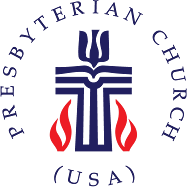
With all the brouhaha leading up to the release of Da Vinci Code the Movie this month I thought I would ask a Da Vince Code question.
How probable is it that Jesus and Mary Magdalene where married? Is the Holy Grail a object or a person/family lineage? Would you rather live in a world without religion...or a world without science? How much weight should non-canonical text be given?








8 comments:
1) 0%
2) It's maybe a real object; definitely not a person/lineage.
3) False dichotomy. Faith and Reason do not contradict each other. Science and Religion answer different questions.
4) Depends on the source, but definitely less than the Gospels.
1.) 0-5%, but most likely O%. It's not impossible for me to imagine it's true, but I think the gospels or other writings would have spelled that out if it was true (that is if those writings weren't supressed by the church ;)
2.) Neither, it's a myth.
3.) Why do I have to choose?
4.) Helpful to understand divergent views of the faith but I wouldn't take them as gospel.
ok, I'll bite ... though my answers are not much different than those already posted.
1. I don't have a problem with a married Jesus or heirs of Jesus; but I consider it extremely unlikely that Jesus was married to Mary Magdalene. The texts would have no reason to "hide" that fact, Jewish men were encouraged to marry.
2. I have no idea ... I think it's probably myth and metaphor for a variety of things.
3. I see Religion and Science as complementing each other ... not contradicting each other. They each challenge the other in different ways.
4. There are good reasons why these extraneous texts were not canonized. I enjoy reading them for the truths they may point to, but they certainly need to be read through the lense of the scripture.
1) I half-heartedly agree with the minor point in the book that if Jesus were UNmarried, that would be the thing the gospels would point out because it would be unusual. I don't have issues with Jesus being married, especially if he was "in every way as we are, but without sin." If he's really human, he probably felt lust at some point and according to his own words, the only appropriate place for that is in the covenant of marriage.
2) I think the Holy Grail is a myth--remembering that myths are often based on fact or point to/illustrate a truth--that allows some people to access mystery in a different way.
3) I agree with former comments that religion and science are complementary. I believe God gave us brains AND an incredibly complex creation for a reason. (also, one of Dan Brown's other books is totally about this--I think it's Angels and Demons).
4) Ditto the previous comments...they can be useful (especially for contextual issues), but I would like to think that those men involved in the canonization process were led by the Spirit and chose the texts that would lead us most clearly to relationship with Christ.
1) 5%, but what difference would it make?
2) Why does it matter if I am not seeking it?
3) I'm with the previous commenters that it's a false dichotomy.
4) Give it enough weight to let them make a good action adventure movie. But I agree with the others that it is helpful to illuminate how people think and have thought about the faith. There are lots of non-canonical texts that North American Christians think they just have to own and claim to have read. Whose bookshelf would be complete without a copy of The Purpose-Driven Life?
I'm doing just fine without a copy of The Purpose Driven Life.
(I bought it but I threw it away after the first chapter or two.)
And THAT is how they start suppressing non-canonical texts.
First your copy, then your neighbor's, and before long it is an organized global conspiracy.
LOLOL in another 1000 years people will find millions of copies of TPDL paperbacks and CDs in landfills and conclude that they have unearthed a neonongnostic sect of Christianty that the Templars of the 21st century sought to suppress.
Post a Comment